|
Michael Seymour Blake talks movies (This won’t be spoiler-free, although I truly don’t think anything written here with diminish your viewing pleasure.) Artistic, contorted, claustrophobic set designs. Creepy, uncanny atmosphere. The Cabinet of Dr. Caligari’s legendary reputation is well deserved. During the winter of 1918/19, two pacifists (one a disillusioned officer during WWI, the other feigning mental illness to avoid service) wrote a screenplay for a movie that would influence a myriad of horror films and more for years to come. We owe so much to this German expressionist classic. But listen: there’s more to it than just cinematic importance. It’s still friggin’ great. I first saw an unrestored version of the film, spending most of my time squinting at indiscernible set pieces and blurry-faced characters who seemed like clouds masquerading as humans. Still, Caligari is so good that I came away satisfied. Then I watched the newly restored version, and to quote the great Pointer Sisters—woo-wee! Seeing everything in the clarity I’m sure director Robert Wiene intended was a staggering experience, elevated by having initially viewed its visually inferior predecessor. I kept inadvertently yelling “damn!” as the background’s twisting depths revealed themselves. Told as a frame story, The Cabinet of Dr. Caligari follows Dr. Caligari, a crazed hypnotist who debuts a prophetic somnambulist named Cesare at a local town faire. After Cesare correctly predicts fairgoer Alan’s brutal demise, police stop another murder in progress. Is it the same perpetrator who killed Alan? And where does the mysterious Cesare fit into this whole mess? There’s a bunch of allegorical readings to be wrung out here, from championing authority to challenging it, but the film works without intellectualizing anything. It conveys a general “allegorical feel” with or without historical context. (Though I do think understanding the historical context will only enhance your appreciation.) The world of Caligari is unsustainable, slumping, on the verge of collapse. Having just experienced the horrors of war (in one way or another) undoubtedly influenced the writing duo’s darkly creative vision. But for me there’s also much to celebrate here. You can sense the human hands that crafted the sets and painted the shadows. Morbid as it is, it’s a testament to the beautiful power of people, to the act of making. Alright MSB, enough with the sentimental stuff. Conrad Veidt nails it as the ghoulish Cesare, portraying the tranced-out sleepwalker like he was born for the role. The guy looks to have been torn directly from the hypnagogic backgrounds. With all Caligari has to offer—murder, intrigue, suspense, inventive sets—somehow my favorite scene is when Caligari feeds Cesare. There’s something oddly sweet about glimpsing this top-hatted man’s mundane, daily task (even if it’s just a necessary requirement to continue his nefarious plans). The frame narrative setup wasn’t in the original script, but producers demanded a more hopeful ending. Both writers (Carl Mayer and Hans Janowitz) vehemently opposed the change. I think they were right to fight against it, even if the added plot twist arguably helped make Caligari so memorable. The twist was more than unnecessary, perverting one of the intended themes—healthy distrust of authority figures. It also lessened the horror of the work, patting us on the head and assuring us that everything is under control. All this terror is our own mental illness. And good news! We can be cured of it. Even this significant criticism can be almost painlessly forgiven. And to be fair, we’re offered the slightest hint of ambiguity as the camera lingers on the benevolent “real” Caligari’s face at the end. A filmmaker’s wink—maybe it’s not all in our heads? Maybe the world is a crooked, nefarious place run by crooked, nefarious people. This genuine classic still manages to feel fresh and exciting. Got nothing but respect for it. I wanted to use the word “perspectivism” here somewhere, but I ain’t smart enough to use it organically… So… perspectivism.
Michael Seymour Blake talks movies Welcome to Potters Bluff, a sleepy seaside town that ain’t so sleepy at all. An unlucky photographer (played by Dennis Redfield) meets a woman (Lisa Blount) wearing painfully tight jeans on the beach. They flirt. She seduces him. Then a bunch of townspeople show up, and the movie throws a surprise left hook that leaves you dazed on the floor. The overcast sky in this ruthless introduction (created by suspending a huge flag from an overhanging cliff to block the sun) sets the tone for more dark events to come. When an overturned car is found with a charred person inside (the photographer?), Sheriff Dan Gillis (James Farentino) is on the scene. Assisted by eccentric town coroner/mortician Mr. Dobbs (Jack Albertson), the sheriff grows suspicious about the mysterious crash. His wariness deepens after a body turns up—an obvious murder. Stranger still, he learns that his wife Janet (Melody Anderson), a local schoolteacher, knew the burned man in the car. But her story doesn’t quite check out, and Sheriff Gillis is left wondering who he can trust. Dead and Buried is the opposite of slow burn horror, throwing ghastly events at us left and right with pacing that never eases up. The momentum-focused screenplay by Aliens writers Ronald Shusett and Dan O’Bannon (although apparently O’Bannon claims none of his ideas were used) has some smart dialogue and a ton of intrigue. Gary Sherman (who also helmed a movie I highly recommend--Death Line) gives us foggy streets, bloodthirsty cabals, and a constant sense of lurking danger. Farentino adds some humanity to the role of a local Sheriff tossed into a nightmare version of the town he once knew and served. Anderson plays his loving wife with a peculiar innocence. Even those with smaller roles, like the harmless-but-overzealous wannabe cop Betty (Estelle Omens), have a unique touch. But the obvious favorite is Albertson’s Dobbs. What to say about Dobbs? Here’s how we meet him: two headlights shine through the night as 1938’s jazzy “And The Angels Sing” echoes throughout the surrounding darkness. He’s on his way to join the scene of a horrible accident… “Talk about an entrance,” remarks Sheriff Gillis. The car rumbles forward, passing a Potters Bluff sign. It pulls up in sluggish fashion. Dobbs has arrived. He’s dressed like an old school gentleman—shirt and tie, fedora, white flower attached to his lapel. The sheriff is frustrated by Dobbs’s tardiness, but Dobbs shushes him. He maintains eye contact with the sheriff as the song plays out, light reflecting off his black rimmed glasses like the glowing headlights that marked his introduction. I loved him right away. Dobbs takes extreme pleasure in making corpses look as good as ever. Better even. His appreciation for old-fashioned big band music, dedication to his craft, and sharp wit make for a character I couldn’t get enough of. Albertson was very ill during production and died shortly after. His performance was impressive with or without knowing this, but it does add a certain extra weight. Equally as impressive are Stan Winston’s practical effects—from needles in the eye to the complete reconstruction of a human head, he and his team have accomplished something horror fans will continue to discover and love for years. Even if the surrounding story had nothing to offer (and it does), the work Winston and co. display here make it worth a watch. Take the body in the car wreck for example. The camera sits nice and close to a mutilated person hanging limply upside down in the front seat. It’s all glistening muscle and bone and teeth except for a small patch of skin around one of the eyes. Nasty stuff. Already memorable. But then as a hand reaches towards it, something shocking happens. I won’t say what, but it’s a horror moment that stands with the best of them. A scene involving acid up someone’s nose stuck out to me while watching. It looked noticeably cheap in comparison to everything else, like it’d been edited in from a weaker movie. Later, I learned it was one of the only effects Winston didn’t have his hands on, a glimpse into what could have been. His contributions are essential. Dead and Buried does have some weak links. Like when a family spends way too much time searching for the inhabitants of a so-clearly-derelict house. It rocked me out of the movie with a big eye roll. (What happens because of this sequence, though, more than made up for it.) There were characters I wish took a different turn, and the ending, while somewhat fitting, felt a little too tv-movie and a lot too obvious. All is forgiven thanks to unforgettable effects, colorful characters, and of course super spooky atmosphere. It’s all so damn entertaining. This belongs on any horror fan’s watchlist. Bonus: if you’re a philosophy fan, there’s a “free will” discussion waiting for you and your pals at the end of this.
Kim talks to Addie Tsai about their new biracial, queer, gender-swapped retelling of Mary Shelley's Frankenstein
KG: Hey Addie, and welcome to VA btw! I haven't read Unwieldy Creatures yet but I want to. It feels like a good season to read it too. I'm curious why you decided you wanted to write a retelling of Mary Shelley's Frankenstein? How did it start?
AT: Hi K! Thank you! I'm loving fall!! I've been obsessed with Frankenstein since I read it in a Romantics Literature class in college. I just recently figured out that I became obsessed with the novel at the same age that Shelley was when she wrote it, which feels special to me. I would say that I relate to it in more unexpected ways. I related to it because as an identical twin, I was interested in how Frankenstein and the Creature mirror one another while being, of course, very different. As a person of mixed race reading the novel at a time that mixed race was incredibly stigmatized, much more so than today, I related to the Creature's tale of isolation and being othered by society. In fact, it's only when society turns on the Creature that Shelley begins to call him the daemon, the wretch, the ogre, etc. Finally, as a child of narcissists and in particular a child of maternal abandonment, I felt seen in the novel, especially as a teenager. I began to reread Frankenstein, as I like to say, as a "self help book," when a relationship with a pathological narcissistic painter (one who, ironically enough, I was collaborating with on a Frankenstein gallery show at the time) ended terribly. I wanted to understand narcissism, and so I began to delve back into Shelley's masterpiece to understand it, to somehow free myself of being drawn to narcissists. That led me to propose a dance theater adaptation (and a collaboration) of Frankenstein, with a local choreographer where I lived at the time. We co-created Victor Frankenstein a decade ago this past February, which was a contemporary dance theater adaptation of not only the narrative of Frankenstein, but also some of the circumstances and relationships of Shelley's life that I felt informed her creation. It was in the summer of 2019 that I started thinking more about a Frankenstein retelling, though, while my ex-partner and I took steps to begin IVF. As I learned more about IVF, and started to consider the rise of the access and use of reproductive technologies, reproductive rights began to be challenged, particularly in the American South. It was then that I thought we were living in the perfect landscape to consider a new framework for Frankenstein. From there, UNWIELDY CREATURES grew. KG: That’s a lot of different interesting connections! Being a twin and mirroring, but also traumatic experiences re narcissistic parents and partners. Did you find any insights in Frankenstein, as a “self help book”? A dance theater adaptation sounds really fun, too. The Creature is kind of like the ultimate othered literary figure. I read in your book description that it’s a modern retelling with an embryology lab and queer biracial characters (and a nonbinary creature!) which sounds super exciting. What kind of story did you want to tell and how did Mary Shelley’s original inform your version? AT: I wish I could say that Frankenstein did offer me insights? I mean, it probably did, but it was a slow burn, if you know what I mean. SPOILER ALERT I think one of the things I really thought about re-reading it in this lens is how Frankenstein (the scientist)'s unprocessed trauma leads to his narcissistic irresponsibility. UNWIELDY CREATURES is definitely a story written for Frankenstans, as I created a parallel scene or storyline for almost every part of the original, aspects of the original that aren't often included in adaptations. I also attempted to use a diction that was a kind of hybrid between a contemporary diction and Shelley's 19th century language. KG: Oh that makes me want to read them together and compare lol. And that's also something I think about alot, narcissism as a result of trauma, and what you can do about it. How trauma puts you in survival mode? It feels like a difficult topic to talk about. Speaking of adaptations, we watched Young Frankenstein this past weekend, which is alot of fun. I'm also a fan of Penny Dreadful (the first two seasons anyway) and their Frankenstein and Monster. I remember watching the original Frankenstein in a high school film class but don't remember anything but the lake scene, vaguely, as horrifying. I need to rewatch it. Do you have a favorite film adaptation? Did you find any inspiration there too or was it mainly the book original? It's interesting that you said you created parallel scenes, which is like a mirroring! AT: Yes, I hope you do! Haha, tell me how it goes. I think the trauma and forced enmeshment that Victor experiences as precursors to how he decides to embark on his "experiment" is largely missing from adaptations. At the moment, I think narcissism is talked about badly! And too generally. Young Frankenstein is my favorite adaptation! I am trying to get access to Penny Dreadful! I hear it's really great. The original Frankenstein is charming, but certainly not my favorite. I did not really look at film adaptations for this work, probably because UNWIELDY CREATURES is more an homage to Shelley's text than to all the many adaptations of it. KG: Can you elaborate a little bit about what Unwieldy Creatures is about? What's the story in your adaptation? AT: Unwieldy Creatures is set in a few different locations--Indonesia, Oxford, West Texas, Vermont, and somewhere in the southern United States. Most however, occurs in real time in the final location. Our narrator, Li, also known as Plum, tells us the story of meeting Dr. Frank, also known as Z, who is a queer biracial Indonesian reproductive scientist and the first to create an embryo without using sperm. Plum is a biracial Chinese intern at Dr. Frank's lab, and through a number of circumstances, ends up caring for Dr. Frank in her apartment. It is here that Dr. Frank tells Plum about her childhood, and the events that led to the sordid story of her creation (and how it went dreadfully wrong) to ultimately ask Plum to collaborate with her on an experiment. Plum has to decide what her desire for ambition is worth. This adaptation largely takes on in vitro technologies as the scientific basis for the creation narrative, and considers some of the ethical dilemmas as our technology around in vitro grows more ethically complex. KG: Thank you, that sounds super fascinating. So, something else, kind of unrelated but also feels connected, that I wanted to talk to you about is photography. When I first added you on fb I remember you were posting a lot of polaroid self-portraits and double exposures (which I love!). I’ve been getting into photography more in the last couple of years too and also self-portraits, thinking about and exploring/interrogating masculinity (it feels, as a construct, so resistant to being seen as a body? and also any sort of ornamentation?) which is something that has paralleled my own slow understanding of myself as nonbinary. What’s your relationship to photography, has it always been an interest, and specifically these self-portraits? And why polaroid, which has gotten really popular again? My daughter is into it! There’s also like a general simplistic idea that taking selfies is narcissistic, but do narcissist really want to self reflect? lol. In my experience they want to use others to reflect them (Frankenstein?) AT: Ah! I love to hear about you using the self portrait to explore/interrogate masculinity. I also consider many of my self portraits a way to interrogate gender norms, especially considering "the male gaze" as it has proliferated among photography in particular. I've been interested in photography, in one form or another, since I was ten years old, and I asked my mother for a snap and shoot 35mm Vivitar camera for my birthday. I wish I'd had the money and access to formally train in photography, but alas. I started with a 35mm Pentax in my late twenties, and largely focused on self portraits, and then double exposures shortly thereafter. But, as film has become harder and harder to process - you could still get your film developed at Walgreens back then - I'm enjoying the Polaroid because it's still analog and because of its quick nature. Polaroid cameras are being reissued, with a bunch of contemporary app features, and I really love the physicality of the object and how finicky they are. There are so many things you can't get with a Polaroid! I love the tension in that. Writing is something I work very hard at, technically speaking, but with photography I really enjoy not knowing *too* much about its processing. It's a place I enjoy playing, experimenting, failing, and seeing what will come of it. I suppose you could always use any sort of medium to indulge in one's narcissism, but I'll first say that I think self portraits and selfies aren't the same, and I get very frustrated by the conflation. To me, self portraits are works involving the creator as the subject and are very carefully cultivated and considered, and selfies are snapshots taken of one's self. I'm not saying selfies aren't ever working in ways that a self portrait does, but I don't think it's necessarily the case. I agree with you, though! That narcissists are less about self reflection as they are about seeing everything around them as reflections of themselves, which is very different!
Polaroids by Addie Tsai
KG: Ideally I would want to get into film photography but the process feels intimating, and also more costly to keep up. I wish we had more access to photography equipment because it’s so expensive! They should have cameras at libraries, in an ideal world, that you can check out. I have a used Canon but it’s had some problems which has kind of killed the joy for me, temporarily, but I hope to get back to it eventually. A polaroid sounds fun and relatively easy tho, and I like the idea of limitation and the physicality and not being fully in control over the outcome. Maybe I’ll look into it too. When I was looking at cameras last I was trying to find some sort of analogue and digital hybrid because I don’t want my creativity to be dependent on being able to buy film.
Anyway, photography is kind of on pause for me at the moment but I’m sure it will come back, what about you? How often do you use your polaroid, or other camera? And do you have any other literary projects you’re working on at the moment? AT: My institution does have access to cameras ... but alas, they are all digital. It would be amazing to get more into it. When I have time I want to also start using my old 35s again...maybe one day. I hope you find a way back to it also! In 2020 and 2021 I was taking a lot more photos with the Polaroid, especially when our version of quarantine was happening and I was teaching from home. But right now my life is just way too overwhelming and so I mostly just use Polaroid when I'm specifically inspired. I miss it, though. I'm working on a few projects! I'm currently trying to gather submissions for this new anthology project I'm editing with Jessica Kingsley Publishers, EXPRESS YOURSELF, an anthology centering LGBTQIA+ teens on fashion and will also feature a few prominent adults: https://addietsai.com/express-yourself-anthology-seeking-submissions. I'm also working on a non-linear lyric memoir, a graphic novel in verse, and I have a couple of other ideas up my sleeve. KG: I look forward to hearing more about them! And also seeing your photography when you get back to it. Thanks for taking time to answer these questions and I’m happy to have gotten to know you a little more! One final question, do you associate any particular music with writing Unwieldy Creatures? Any songs or artists come to mind? Does your writing process involve listening to music? Or just anything you feel would pair well with it. I always find myself making playlists this time of year, as it gets colder and we approach Halloween. AT: For many years, which includes UNWIELDY CREATURES, I listened to Sufjan Stevens's Carrie & Lowell in order to write. I can't explain exactly how it put me in the exact frame of mind I needed to write the novel, but it did. I think I finally wore that one out, though, and am currently taking new requests! Lately I've been writing to instrumentals. My writing process doesn't *have* to include music, but it often does help me get into the mood. But it has to be the perfect thing, and sometimes what works one day doesn't work on another. 10/26/2022 The Future Is Unwritten by Douglas MenaghThis originally appeared in Moonchild Magazine. I was watching the rock doc The Future is Unwritten alone in my apartment on the east side of Manhattan when I heard Joe Strummer say the words, “People can change anything they want to, and that means everything in the world.” I’d been a massive fan of The Clash for a while by that point, but it wasn’t until I started learning more about Joe Strummer that I felt a great turning in my heart.
It was February 2018, and I was particularly down on my luck in the middle of an unsuccessful job hunt after finishing my MFA. I was unhappy and heartbroken over the state of the world, but for all of my privilege, I was on the sidelines and wasn’t making a difference. Learning that Joe was unhappy and went through wilderness years after The Clash broke up, losing his band and his parents, gave me a renewed sense of determination in finding purpose at a time I felt like all hope was lost. “I had to restructure everything,” Joe said. “I had to really disassemble myself, examine all the pieces, and put myself back together.” Joe Strummer’s regret over firing guitarist Mick Jones from The Clash touched me in a way that made me realize that I had let ego get in the way of past relationships. There was something in the way he took ownership of his mistakes that gave me the strength to take ownership of mine. “Getting rid of Mick must have been an ego decision,” Joe said. “I don’t hesitate to say that.” The truth is, I had grown cold and distant to people I had cared about. Hearing him speak, I realized that and wanted to change. Inspired by Joe, who used his music to bring awareness to social justice issues, I started applying for jobs in education. I figured that teaching could be a way to make a difference in the lives of others. About a month afterwards, I interviewed for a substitute teaching position at a school in downtown Brooklyn. I had never worked with kids before, and while substitute teaching wasn’t what I had in mind as a career prospect or “a real job,” I was open to this opportunity that came my way. There was something about being in this school in the red brick building, sunlight shining on Brooklyn, that affected me. It wasn’t unlike the way Joe had affected me that February. I liked to think that Joe would have approved of me getting into teaching, that by trying to make a difference in someone else’s life, I could begin to set things right. I didn’t know it then, but the experience would change me. Joe made me want to be a better person, but this school and those students made me want to teach. In December 2019, still working at the same school, but now enrolled in a graduate program in education, I was assigned to teach a lesson of my own design. When it came time for me to design the lesson, I chose to teach about The Clash and how their music was a reaction to the social climate of the late 70s. My goal as an educator in teaching that class was to get out of the way and let the students connect with The Clash. I showed them videos of the band playing “Garageland” live, and while I had hoped that they would get into the music, I was shocked that some hummed along and bounced their heads. When I asked the class about Joe Strummer’s performance, one student got up to imitate Joe’s movements. My heart sang. When I first heard Joe Strummer say people can change anything they want, I didn’t know if he was right or not. Hoping he was, I tried to change and be better than who I was. I’m still trying to be a better person, but I’m proud of who I am in part because of Joe, and I know now that he was right. Michael Seymour Blake talks movies Andrzej Żuławski had completed around three-quarters of On the Silver Globe before the Polish Ministry of Culture shut the film down in 1978. Their public reasoning: mounting financial concerns. Żuławski suspected it was a politically motivated move (his work being too antimarxist, anticommunist). Either way, the ministry made life difficult for him, banning him from future projects. Unable to easily leave the country, he found himself walking the grey Warsaw streets feeling “miserable, gloomy, and resentful.” A spiritual nomad. The idea for Possession was conceived during these somber wanderings. He wanted to create something that defied borders and political systems. Something that could not be controlled or commanded. Żuławski’s French buddy, who worked in Hollywood at the time, helped him get to America (the very same buddy ended up marrying Żuławski’s ex-wife). It was there in Manhattan, NY, still dealing with lingering marital issues and feeling oppressed by communist Poland, that Possession evolved from idea to screenplay—and rapidly too, a sudden pouring forth in just a few months. The film reached its final birthing stage in Berlin, in large part thanks to American financial backing. The Berlin wall felt like the perfect place to shoot a movie about separation and identity. With such a multilayered inception, how could this movie be anything other than what it is? Plus, let’s not forget the fact that Żuławski was born in Soviet Ukraine in 1940— basically thrown right into the apocalypse of WWII. Possession is notoriously difficult to define, and there are seemingly infinite ways to analyze all the film throws at us. Reviewing something like this is challenging because entire thesis papers can be written about almost every element and theme involved. OK, MSB, we get it! What’s it about already? The short version is that it centers around the separation of a husband and wife. A man named Mark (Sam Neill), who is some kind of spy/intelligence agent, returns home from a job to discover his wife, Anna (Isabelle Adjani), wants a divorce. She’s acting erratic, and it all feels so sudden. Their son, Bob (played by Michael Hogben), stays with Anna after the separation, but is neglected. Soon Mark confronts a guy named Heinrich (Heinz Bennent), the “enlightened” thinker and lover Anna’s been having an affair with. After a violent confrontation with the adulterer (Mark instigates, then gets knocked around by the physically superior man), Mark finds out there’s yet another mysterious reason for Anna’s recent behavior. He hires a PI who follows her to a ramshackle apartment building. It’s in that busted up place that the PI stumbles upon the horrific truth. Meanwhile, Mark meets Helen, a schoolteacher that looks exactly like Anna. What the hell is going on? This is a movie of doppelgangers, improperly used electric knives, dead dogs (gods?), crises of faith, and a skeleton in the closet to end all skeletons in the closets. Possession feels like a frenzied improvisational dance. Bruno Nuytten’s cinematography compliments the frenetic spirit of the movie. The camera coils across scenes, pushes us into awkward close-ups, and shakily follows people into madness. A more docile perspective would have enervated the final product. The frantic editing and sudden bursts of music by Andrzej Korzynski also keep us from ever relaxing in our seats. Mirroring/reflections play a major role in Possession. We see them often. Early on, a distraught Mark moans into a phone, unable to speak, and later, a distraught Anna moans at a crucified Christ, unable to speak. When Mark sits down at the PI office, the agent vaguely mimics Mark’s chair-swiveling. The camera relaxes here, letting us observe this echo. Anna’s broken-legged friend Margit (played by Margit Carstensen) acts as a poor reflection of Anna (I call her “bootleg Anna”). We then briefly meet a woman wearing one black boot who seems to reflect Margit. “We are all the same,” a knife-wielding Anna tells Heinrich at one point in the film, “but in different words. In different bodies, and different versions.” One of the two most obvious examples of mirroring (without spoiling too much) is the character of Helen. She is Anna’s incongruous twin (played by Adjani with green contacts and different hair). Helen possesses a more pleasant, domestic personality. In a movie overrun with symbolism and cosmic horror mayhem, you start to wonder if Helen is actually human, or just the ideal counterpoint to Anna’s dark secret, a walking reflection. Like Anna says, “Goodness is only some kind of reflection upon evil.” Demoniac performances imbue Possession with a mythic energy. Adjani gets most of the love, but Neill and Bennent more than hold their own. Neill plays a man fractured, his faith in family—a stand-in for his abandoned faith in God?—pulled apart like taffy. We watch him spiral into sweat-soaked withdrawals, then calmly manipulate with a devious grin. Bennent’s spiritual gestures and overt mysticism are both hilarious and off-putting, especially after we see his character for what he truly is. The famous subway scene where Anna is torn apart by the “two sisters” battling within her is one of the greatest experiences I’ve had with cinema. She flings herself around, shrieking, crying, convulsing. We follow her through it all, a handheld camera making it feel like we’re witnessing the gyrating display in person. It’s the most violent ballet ever filmed, culminating in an equally violent, otherworldly miscarriage. Fitting that the scene was shot towards the end of production, a perfect encapsulation of this laborious movie. From its intriguing opening to its apocalyptic final act, Possession is fraught with anxiety and impending doom. It’s open-ended enough for multiple interpretations, but isn’t so vague that it feels cheap. Love it or hate it, you’ll be emotionally regrouping once the credits roll.
10/20/2022 Likehacks - October 20, 2022Michael Seymour Blake talks movies If you’re familiar with Bava, you already know the deal—good, bad, or ugly, it’s gonna be done with style. Ceilings stretch to the heavens, shadows lurk like chasms to another world, and bold fashion choices are made in this giallo oddity. It’s a psychological exploration of a killer, a suspenseful slasher, and a supernatural thriller rolled into one flawed-but-interesting package. Meet John Harrington (Stephen Forsyth). He’s the head of a successful fashion house focusing on bridalwear. John’s got a problem. Well, two problems. One: his wife Mildred (Laura Betti) won’t give him the divorce he so badly wants. And two: he’s obsessed with uncovering the mystery surrounding his mother’s death, and the only thing that jogs his memory (a little at a time) is murdering brides-to-be. John is a self-proclaimed “paranoiac” and madman. His weapon of choice? If you guessed hatchet you’d be wrong. It’s a cleaver. Real shiny one, too. His favorite technique for getting rid of bodies is the incinerator located in his hothouse. Wanna spend some time with John? Suspicious Inspector Russell (Jesús Puente) sure does. The opening credits are some of the coolest I’ve ever seen. A lovely orchestral piece plays as an animated montage of faces appear. Everything looks slightly corroded, like old photographs. It’s all blues with splashes of red like fresh blood spilling across the screen, stop motion style. Bava himself created this moody sequence. We open on a train. A figure in black wearing a chain link belt (style, baby!) creeps through a corridor. We see a motionless boy further down. A hand slinks to a door handle, pauses. The figure’s meditative face is revealed—a clean shaven and well-kept man. We’re hit with a hazy flashback of a stairway and ascending footsteps, click clack click clack. Cut back to the man’s face, then to an over-the-shoulder shot of the boy looking out a dark window, his grim visage reflected like a ghostly omen. All the while a subtle, dissonant tune plays. Next thing ya know we’re on the other side of the door where a couple is making out, unaware of the intrusion. The woman’s wedding dress sits near some luggage. (By the way, these two are making out in a really stilted manner, almost as if they’re posing for a picture.) The man surprises them... After the slaughter, another hazy flashback. This time we see a woman who seems to be in trouble. She calls out a name: “John. John. John.” Our man’s name is John. Back in the present, John wipes a bloody cleaver on the woman’s wedding dress (loved that), puts a “do not disturb” sign on the door, and leaves. What a way to start! Intrigue, gothicy atmosphere, awkward kissing, weird little boy, bloody cleavers! Hatchet for the Honeymoon’s central mystery doesn’t end up being all that compelling, but it hardly matters when you have scenes like the one where John, having just introduced himself as a dangerous maniac, fishes a drowning fly out of a glass of water. “Poor little fly,” he thinks in his vivid blue button up and yellow ascot. “Why are you so daring? You’re so fragile, and yet you’re born, you reproduce yourself, and you die like men. The difference is that you don’t think, and you don’t need to remember. You don’t fear death because you ignore it.” The fly’s life, he thinks, is simply a mere biological accident. Utterly without meaning. He looks at something off camera and approaches it. “But death exists I can assure you,” he continues. We see what caught his eye now—a pet parrot whose bold colors are like an expansion of John’s outfit. “And that,” he says, feeding the fly to the parrot, “is what makes life a ridiculous and brief drama.” It may not be profound, but it suits the mood well. It also sets up some interesting stuff later—is death as final as John seems to think? Forsyth plays our man like a raptorial bird, allowing the character to become undone/vulnerable only when necessary. Our gentleman killer tells himself (and us) that he only takes life to shake loose the buried memories haunting his mind. However, there’s more going on than just that. For example, he’s got a chamber full of mannequins that he sometimes smooches. All of them are decked out in wedding gowns. And the faces on these things, let me tell you, are very chilling. Unsmoochable, really. The tension amps up whenever we’re in that room with him. It makes for some really fun imagery too. I do wish there was a bit more going on with this room. More scares/weirdness could have unfolded in it. There’s still some humanity left in this creepo. It’s buried deep beneath his ego and his monstrous need to piece together the fragmented images tormenting him. This is especially apparent when he meets Helen (Dagmar Lassander), a young woman looking for a job. He seems to take an earnest liking to her despite, well, the urge to murder her. Will Helen end up in the incinerator, or will John overcome his homicidal compulsions? John’s wife Mildred is reading a book titled Mediums and Spiritism when we meet her—this comes into play in a few ways, one of which being when she supposedly channels the spirit of John’s mother, totally freaking him out. Their first interaction tells us everything about their relationship—bitter, spiteful, and illusionary. And it only gets worse. She’s a constant annoyance, deriving pleasure in haunting him. Underneath all the sadistic joy, though, is the pain of ignored and abused love. Betti does a great job with this character, hinting at her woe but overlaying it with an amusingly smug impudence. Because of John’s proclivities, I couldn’t help but root for her the whole time. She was an unexpected favorite, an aristocratic specter relentlessly looming around John and making the movie all the better for it. One of my favorite moments is when she informs her fashion-forward husband she’s leaving on a short trip, taunting him that she’ll be back before he knows it. She’ll always be back. While goading him, she takes a small bite of a grape. She places the grape on a mirror-like tray and smashes it with her finger. We linger there with the reflection of her warped, overturned face. Ahh, cinema! I can’t say too much more about Mildred without spoiling a major plot point, but let’s just say Bava takes her in a surprising direction. It feels a bit disjointed (I believe it was a last second decision in the creative process), yet I think she’s a big part of what makes this movie memorable. The couple’s darkly humorous battle for dominance was the most enjoyable part of the whole thing for me. The score, by Sante Maria Romitelli, ranges from loungey to psychedelic to orchestral to fuzzy electronic. I liked it a lot. The camerawork is alive, sitting at unexpected angles, hanging low at a child’s height, or high up like a floating spirit. There’s a cool moment when Inspector Russell shows up with the husband of a missing woman at John’s mansion. John has just butchered someone who is still on the stairs above. Her hand slips off the baluster as she expires. Had either one of the uninvited pair simply looked up, they would have seen the hand, now dripping with blood, hanging over the steps (I wanted John to be caught, yet somehow felt nervous by that prospect). The camera cuts close to the hand as they’re talking, then zooms out until it’s as if we’re lying on our back at the men’s feet. Bava knows how to keep things visually engaging. (John’s watching a Bava movie--Black Sabbath--during this sequence too. Ya gotta love it!) Hatchet isn’t generally considered Bava’s biggest or best, but it’s got enough going for it to make it worth your while. And if you’re already a Bava fan this is a no brainer. The kills aren’t all that exciting, so don’t expect a gorefest. This is more of a character study with a morbid, opulent flair. You’ll at least appreciate the aesthetic choices. How ‘bout John’s loungewear? You know the one. I’ll take two please.
When I was thinking about this interview project and what I wanted it to be someone that came to mind that I wanted to talk to was Ulrich Jesse K Baer. I’m a big fan of his writing and existing in this world. He’s the writer of Midwestern Infinity Doctrine (Apocalypse Party 2021) and At One End (Essay Press 2020) and an exciting new work someone should publish, like, right now! KG: You’ve been in Europe for a while now. First Copenhagen, I think, then Amsterdam and now Berlin? Did I miss somewhere? Being from Sweden I feel like I should be more familiar with these places but I’ve only been to Copenhagen and that was when I was 18-20 and visited the Roskilde music festival a couple of times, which feels like it barely counts. I’ve been to Germany but not Berlin. What has your experience been with these cities and which one is your favorite? UJKB: Germany is exactly a Caspar David Friedrich painting–desolate and unheimlich. Sometimes I’ll get this feeling that creepiness is seeping in from all around me, here. And exacerbated by the transition into fall. I watched people I was with in a park garden a few days ago talk about how the dark rain made them sleepy. I love Amsterdam, and I was disappointed by how large Rembrandt’s the Night Watch painting was irl. I think all of Europe is creepy, even. Amsterdam was only a little bit like that scene in I think Sweet Movie with the communist and their canal boat and a bed of sugar you could die in. Denmark: increasingly deranged as you take the trains in/to the interior. The Jutland. I met some really lovely queer artists in Copenhagen: less sleepy than the viking graves. I’ve been reading Genet’s Querelle because I think he’s the pre-eminent theoretician of shame, and I read and read it while I was lostly alone in the garden outside the royal library, waiting for a flixbus. I truly recommend the experience of radically compromising the self on the flixbus–take it. In the US, the megabus driver wakes you up around 1 AM and forces you off like a megastop, you wait in the harshing fluorescence of the truckstop snack aisles, like an awestruck child. It’s misery. On the flixbus from Copenhagen to Berlin, they woke us up and we were in this white industrial space as a British voice descended, shouting commands, and we went up the staircases. I had to wander for a while before I realized the bus had parked inside a ferry, and I felt that I had more in common (at least spiritually) with the two other passengers who spent most of the night with their heads bowed over the railing, watching the flecks of foam cut into the waves by the ship wake, the only visibility in the night, than I ever did with people who look more like me. What do you miss most about Sweden? What was yr like phenomenological reading of the ABBA museum? Like Proust style, what feelings does it give you? KG: “I truly recommend the experience of radically compromising the self on the flixbus–take it.” They should pay you for this promotional quote. Radically compromise the self, on the flixbus. This should be a quote that people find when they look you up after you’re dead I googled flixbus and they were founded in 2011, which is years after I left Sweden and Europe. I’ve been here a long time. And thinking of Europe as creepy made me remember this vague memory getting lost in a fog in the german landscape as a child. I just remember us driving, me and my sister in the backseat I guess, and the fog outside, and I don’t know why we ended up on these small roads, and those cliché black and white german buildings all around, that didn’t seem real. That’s how I felt when I first got to NYC too, the buildings looked fake, like they couldn’t possibly be real, but a movie set, and if you walked around the back they wouldn’t have a back, they would be hollow. Full of the American Dream. I still like to walk around storefront buildings here to see what’s behind. And the overgrown alleys in between. I’ve never been to the ABBA museum and this feels now like a monumental failure. Did you go? What was it like?? Growing up ABBA felt too cringely Swedish and I thought I was too cool for ABBA and the joke is on me because ABBA is the coolest. I wish I could travel back in time and tell myself ABBA is cool. And Peter Gabriel. And the 80s. I turned on an ABBA playlist just now because you brought it up. Before they were famous, in 1973, they played in my mom’s small hometown on the back of a truck and I choose to believe she was there. SOS playing: “When you’re gone How can I even try to go on?” I miss mostly people. I miss a more publicly available nature. I miss walking in Gothenburg (where I lived for a number of years) and Östersund (where I grew up). I miss riding the trolley and food and Swedish summer. I miss what might be a fantasy: a less violent-feeling society. But the violence is probably just different. Where are you from, where did you grow up? How do you feel about that place? Also, in your IG bio it says Private Paranormal Investigator. Have you encountered/investigated any paranormal events lately? Ghosts? Have you found the Vampires? A sense of community? We’ve been watching the new Irma Vep series. UJKB: That germanfog memory feels like a Fleur Jaeggy story to me. As a matter of fact, someone told me a similar story, but set in Veracruz, en route to Xalapa, which is fogheavied. I’m so glad you brought up the cinematic landscape–I’m obsessed with flat spaces at night with the depth diminished like the sky was all backdrop slammed against the buildings. And I love imagining you checking to see if you’re on an abandoned movie set. What makes dirty alleyweeds so compelling? We only have the empty substitution for an ABBA museum memory; I have never been. I only went to Malmo, I feel embarrassed by this but one of my happiest memories in Scandinavia was sitting at a table in a semi-crumbling mall complex there, eating a salad bar composition beside the cigarette kiosk, the dominos, busted up bathrooms. The anonymity of the liminal space, where you become dissipate with the atmospherics. Almost like a lyrical self. I love stories about bands playing in truckbeds, now my idea of Scandinavia is superimposed with memories of Mexico. I’ve drawn strength from that ABBA song that goes “I believe in angels / something good in everything I see / I believe in angels / when I know the time is right for me / I’ll cross the street”. Of course I imagine these lyrics are referring to death. How do you keep in touch with people across the oceanic distances? There’s a foggy sickle moon beyond the balcony where I’m smoking a cigarette and writing to you. I was going to write a poem but I felt this would be an equivalent act. Please tell me more about Swedish summer, especially in the 80s! I grew up all over the v haunted southeast. My mother saw ghosts there. One saved her life and I’m still grieving the fact that another didn’t. I watched Drive My car, at your recommendation, today and I was especially moved by the way they acknowledge our responsibility for the deaths of the people we love, complicatedly love, and I want to express an idea that we’re all as humans collectively responsible for everyone’s deaths. In that sense, vampirism is the baseline. We are fed on by the dead feeding our context, the deaths that serve as the surround. I’ve only just started up the paranormal investigation work again. Do you have any European leads? I reference Irma Vep briefly in the second space vampire book–when I talk about being unable to prevent the world from breaking down into circles and points, to stop running away in your stolen film costume. Don’t feel bad about the ABBA museum–there’s still time. Thank you for being in my life and sharing that time with me. Where are you responding from? Sending love! KG: I was unfamiliar with Fleur Jaeggy so I picked a story at random and of course it ended up being a story about dying, a mother and the death of a son (“The Perfect Choice”), and read it while listening to a cover of Stayin’ Alive by 90s singer song writer Heather Nova. I’ve been listening to this cover album for days, and I really loved the story. I want to read more by her. “He stayed up all night, it seemed to him that he had a great deal to do, in the doing of nothing.” I feel like there’s some comfort in the alleyways and alleyweeds, spaces that capitalism has deemed unnecessary and discarded, where you can be unnecessary, useless. The dumpsters behind Dollar General are beautiful. I don’t remember having the same alley spaces and the same contrast between the front and back of buildings in Sweden. There capitalism has claimed all or most the spaces in the city, cleaned up the crime scene. Are they portals? How are the alley spaces in Berlin? Where do you go to be? Alley spaces feel like good places for poetry readings. That Angels ABBA song feels dark and haunted to me. A lot of ABBA does or maybe it’s just me that’s detached. There’s like a sadness behind it. I imagine it playing on repeat while a character cries like that woman in Inland Empire watching TV. I only really keep in touch with my mom, my sister and my dad, with video calls. My mom and sister visited at different times this summer and that was nice. Do you stay in touch with any family? I like that you decided to channel your poem-writing into this correspondence. When in the day do you find yourself writing the most? I loved Drive My Car. I found it really moving in ways I can’t seem to put words to. Maybe in imagining community, even through all complications, a different way to exist together, which is really broad and vague. I also find I like long slow movies, like being exhausted and disarmed by art. I remember watching Tarkovsky’s The Sacrifice when I was 16 or 17 and just being wrecked by it. I remember Swedish summer as bearable, the humidity and heat in southern VA is not. I long for fall here. In northern Sweden some summers you barely got a summer and all warm sunny days needed to be experienced like a rare gift. One summer memory is working for my grandpa refinishing a house and planting trees, chopping wood, while listening to Leonard Cohen on whatever device people listened to music on at the time. One summer me and some friends biked from Ostersund to Stockholm and slept in the woods on the way. “My mother saw ghosts there. One saved her life and I’m still grieving the fact that another didn’t.” I’ve been thinking about these lines and grief. I’m not even sure how to phrase questions about grief. How “do you process”, or how do you “work through”, feel gross, questions written by the overcoming/success ted talk individualism industrial complex. How do you DEAL with? The Power of The Deal? I don’t know by making a DEAL with vampires in weedgrown alleyways! A lot of older family members have died since I left Sweden and I never saw them again and I don’t know what to do or feel about that. A lot of other close people have died and their ashes live in our home. Maybe grief is a bit like Irma Vep climbing on the roof tops, walking through walls. I love your space vampire books! UJKB: I’m rereading you with a glass of the cheapest whiskey I could find at Aldi, I carried it home wielding it in front of me like a weapon. There’s a nice moment in Querelle where Genet says that the dull knife the teenage boy is carrying is more violent and powerladen than the useful knife, because it is a symbol. Yes, let me know what you think upon reading I Am the Brother of XX!! To be discarded. To float in refuse use. To be uselessness. I think I found some dirtcracked alleys in industrial dereliction sections of Malmo. Here is a question that has been haunting me, Kim. To what degree do we make, should we make accommodations to be legible to one another? We compromise ourselves, in coming to speak, entering communication. Bataille posits that we’re reaching towards (each other) across an abyss. We have to borrow from a repertoire of abbreviated signs. I think about this with respect to beauty. Whether you’re revising a text, or changing your body, your body’s language, when do the compromises become excessive? Unbearable? Ambivalent desire, to not want what you want. I have tried to fall through portals in the postindustrial midwest. Have you found any you’ve fallen through? Sometimes I came to the conclusion that all desiring is the affective traces of childhood (awe). Every oil refinery makes me into a reactionary because I imbue it with my memories of Louisiana (thinking about Benjamin talking about architecture in the arcades, the way it ideologically inflects us with its feelings). I superimpose Louisiana Louisiana Louisiana death songs over everything and cannot be faithful to (fidelity in) transcriptions of the real. Do you ever find Sweden where you are? I would book a plane ticket there if you were holding a poetry reading behind a Dollar General. The best poetry reading I ever did was with my friend Zeb at an art venue in Ohio–there was no one there except us and Zeb’s partner and the organizers of the space. We were just singing to eachother, then. Then, we walked through the dark, I think zeb covered me for a pack of cigarettes, we went to their place and talked about assemblage theory. I think there’s something spooky magical in the lost midwestern night. What’s the best poetry reading you ever did or went to? The ABBA lament you mentioned earlier. Hollow pop grief, hyperreal and chromatic. Crying to the television is exactly what David Lynch is all about! Yes! I think about magnetism and distortion, the falling bands of color across the screen. Noisy cosmic background. I don’t have any family except the family I’ve made everywhere since I left. I do long distance calls sometimes, zoom shared movie watching. I miss everyone when they’re gone. I miss everyone when they’re gone. I’ve been struggling to write poetry lately–I’ve been thinking too formally, or else resist feeling. I would really just like to write a sad poem everyday, at some point, before the day ends. Have you seen Andrei Rublyev? I love endurance film watching, too! Slow iconography. Pressing at the limits of attention, in its holy aspect. To be pronate. And how long can you sustain it? And toward what? I cried when Leonard Cohen died. He’s in the furnace of my heart now and forever. Which album(s) did you chop wood to? I’m putting on “The Old Revolution” as this ghostly internet transmission speaks (for me). “Even damnation is poisoned with rainbows” I was a guilty child looking for sacrificial narratives to lose myself in. In the austerity of thought and creed, like “The Partisan.” “Of course I was very young, and I thought that we were winning” to be a royalist ghost in the burgeoning mercantile age. It reminds me of ABBA’s Fernando–“Though we never thought that we could lose / there’s no regret” ABBA’s angels. Remorseless consummation of what is, has been. Amor fati. How did you feel sleeping in the woods on the biketrip? Please describe this feeling. lol yes yr ted talk take! We are haunted by many selves. Irreconcilable. We are unfaithful to. My first night in Berlin in 2017 I went with some guys from a hostel to an ambient music festival, I think it was at tresor. I was all ghost eyes, moving through rooms, watching people pulsating against eachother in the dark, the light strobed. Chainsmoking sitting on the concrete floor pummeled by shimmering soundwaves. Now I feel more like a vampire sequestered, afraid of the burning world. Waiting for someone to approach me in the dark. With radar. In Toufic’s book on Vampires, he talks about how the threshold of the vampire’s castle is roving, an invisible line you (de)note when you stumble trying to cross it. Phenomenological interference. I’m listening to Slowdive’s “when the sun hits” like I was in Berlin in 2017 “it matters where you are.” Creeping through the labyrinth. Towards what infernal reception? Thank you for locating me, through your questions, and your voice. KG: Thank you for your amazing, wandering answers and questions back. This feels a bit like sending correspondence out of war trenches but the trenches are alleys behind Dollar General and Aldi’s. When I lived in Gothenburg I used to buy cheap, terrible cigarettes in a german discount store called Lidl that tasted like ashes. Is Lidl still a thing? I have this one haunting memory that was probably a dream but felt more real than real, staying alone at my sister’s apartment, eating nachos, and waking up in the middle of the night to watch a car, on fire, slowly rolling down the hill outside. I will drink a whiskey toast to you and this interview later. It keeps expanding, not just with each answer, but away from the formal toward something more mysterious, and probably an inevitable collapse. Toward something useless. The interview is growing weeds. I like thinking about Genet’s teenage boy’s dull knife being more violent than a useful knife. The power of spectacle? I don’t know the answer to your question about what accommodations we should make to be legible to one another? I feel like it depends. We protect ourselves and we try to reach out, “open up”, and get hurt, and try again, and don’t get hurt, maybe. We are harmed and trauma sets in our bodies. I’m trying to reach out by doing this, here. Is the internet an abyss? Feels like a graveyard. It feels risky to try, to approach people. The alternative can seem safer but is it really? I’ve been identifying as introverted all my life but lately I’ve been wondering if actually I’m extroverted. I keep wanting to facilitate connection in different ways. And I like to think of this as a creative collaboration instead of getting to “know another”, to meet in a kind of ceremony. I don’t know if that’s a good way to look at it but it feels less transactional, more communal. The swedish woods don’t feel like the woods here but I don’t know how to describe it. Slower and quieter maybe, drier. There are less vines. At night, in sweden, the mosquitoes are ruthless. ABBA’s Fernando sounds like the score to a 70/80s’s fantasy movie. Actually Benny and Bjorn made the score to Mio min Mio (or Mio in the Land of Faraway) which terrified me as a child. It’s a weird english/russian/swedish collaboration starring child Christian Bale and a terrifying knight played by Christopher Lee with a stone heart who turns children into birds. His pale face and metal claw hand. What scared you as a child? “Even damnation is poisoned with rainbows” – I took Cohen’s death hard too. A sense of humor in the bleakest. I started Andrei Rublev not that long ago but never finished, I should start over. Tell me what you’re hoping will happen in Berlin. Are you staying much longer or have to head back to the states? How do you imagine an ideal life would be, for you? FJKB: I. One of my friends described the last space vampire book as a loving / erotic gesture And that gesture, which someone else characterized as psychotic enlightenment Consists in what begins as a question Can you love me To which the response is received Not if you are what you say you are parenthetically if what you say you are reveals the instability at the core of what I am, or hope I am And I say, Here Let me hold you so you can come apart I take some things Bersani gave me (unfortunately-somewhat in spite of himself) and make them into diabolicalbeautiful tools for trans boys And this being what it means to top A field of precipitating flora—the body becomes To father selves into the world by fathering the bodies of the others we begin to intricate in Flowers The problem that ended the book was a hand that swept in from outside, that started destroying the heart I thought I’d safely preemptively reduced away it was still/beating and the hand destroyeddestroyed it and I couldn’t find anyone to hold the trans boy in the book or in real life While he fell apart And that’s what I’d like, A material hand. That having been being said, in order to answer your question I listened to the bjork podcast we discussed the other day—the one on Vespertine she describes how the work predicts the domesticity it prepares a space for That sort of predictive insight, the foresight when you’re at one in harmony with the work the way she Captures the crunchy music box sounds I think of music boxes constantly love like self perpetuating music the soul in Phaedrus, its justification as everlasting—that it’s self moving The music box of love similarly seems to come alive via its own will So I’m like a little deleuzian animal sick in the burrow of a world that doesn’t want me but I’m drawing a line of escape By learning everything I possibly can About how to love. Ii. Syllabus (so far) The double life of Veronique Through the olive trees Phaedrus Lacans seminars on transference A thousand plateaus, revisited (skip their horrific misogynistic thoughts on Zelda Fitzgerald) What else? Black and white fairy tale movies that take place in the tundra with-deer What do you suggest Kim? What’s on your syllabus for learning how to love well, for how to prepare a space for love? III. Answers I have a Lidl sim card but I prefer Aldi. I’m very particular about my cigarette brands. Do you think the car is still rolling down the hillside on fire??? As for the knife: Also because of the relationship between the symbol and what infernally magnetically, sidereally, guides identity. I’m so glad you’re talking about this issue of reaching toward other people (weapon aside). I think it’s probably a spectrum (intro to extro), and that where we are on the spectrum between wanting company and deferring it does cor/respond to our traumatic experiences, like concussive aftershock, of trying to touch other people and getting hurt. Maybe we always meet in a graveyard. I’m glad you’re still trying, it means you’re still alive there, I think. Zeb and I have put Mio min Mio at the top of our movie list. All of my antiantianti novels are structured after b movies. What do you think it is that’s so enchanting about bad movies? I agree I think that clotted wet vininess is more characteristic of the states than here. Definitely finish Andrei Rublyev! I love iconography. An ideal life for me would be so many real material hands and presences, with-mine, to love and be loved by. Hylic ensembles. I hope that I leave Berlin in mostly one piece and that I find somewhere with a stronger community where I have to travel alone much less often, and where I can support myself. The creepiness isn’t romantic–it’s the fascist weather (forecast:same as ever). When I was a child I had nightmares about vampires. <3 PS I’m Friedrich now, I’m borrowing Nietzsche’s strength to be continued?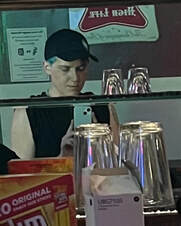
Ulrich Jesse K Baer received his MFA from Brown University in 2017. He was born in Georgia and grew up beneath southern power plants. He is the author of the chapbooks Holodeck One with Magic Helicopter Press and At One End with Essay Press as well as the full length doctrine Midwestern Infinity Doctrine with Apocalypse Party. He has been included in journals such as Prelude, Pinwheel, Bathhouse, Baest, The Tiny, and Bone Bouquet. He loves horses.
He offers creative writing classes sometimes on his website www.ulrich-baer.space |
AuthorOur fabulous blog team Archives
June 2024
CategoriesAll 12 Songs Art Art And Athletes Book Review Chorus Blog Date This Book Game Of Narratives Guest Blog Letter From The Editor Lifehacks Movies Of 2019 Music Pup Sounds Smackdown Strive For 55 Summer Playlists |


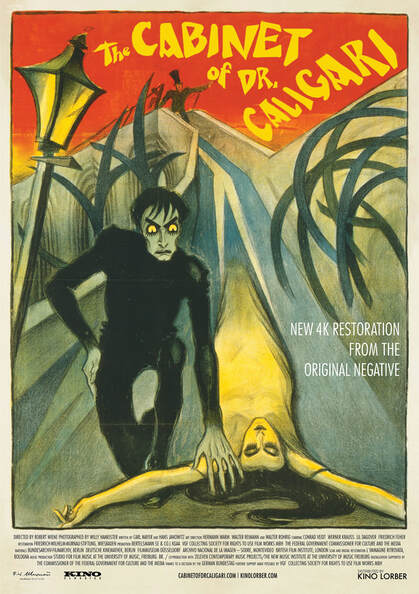
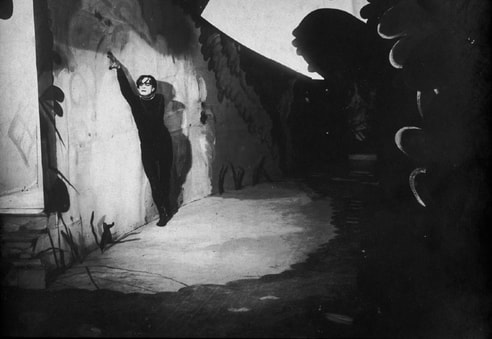
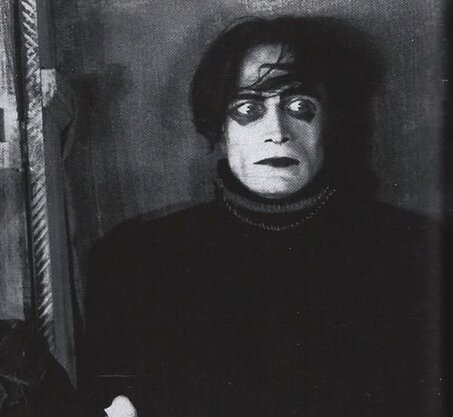

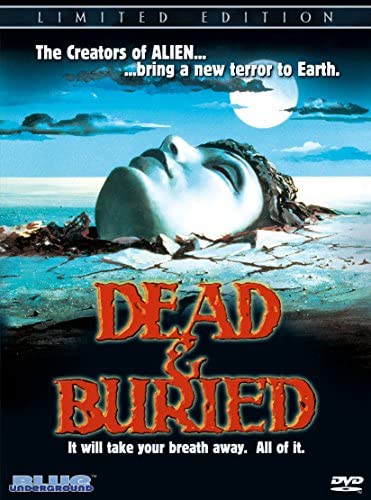
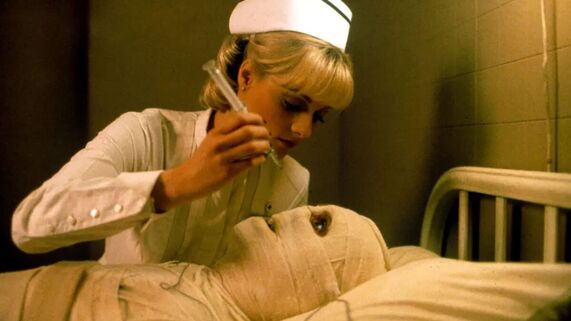

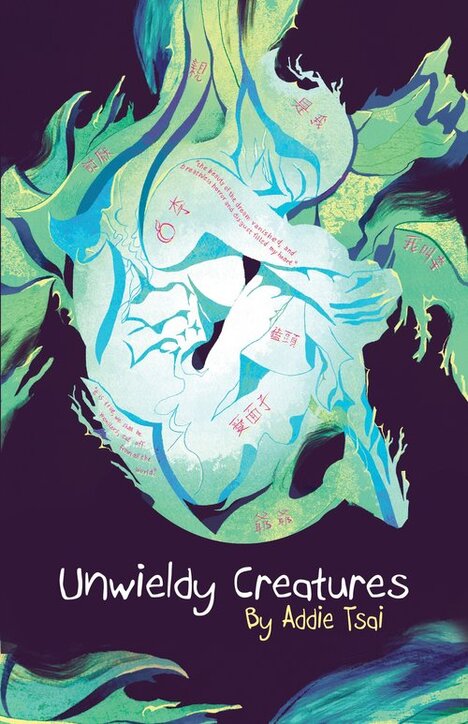
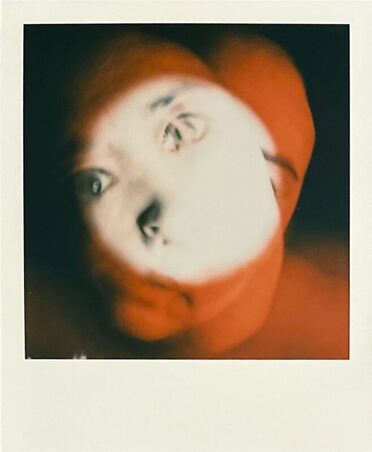
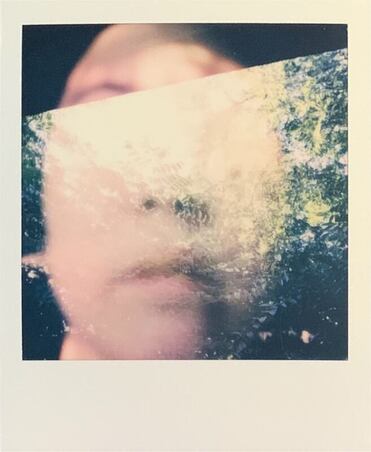

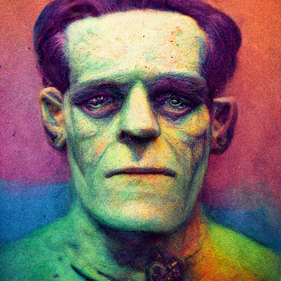
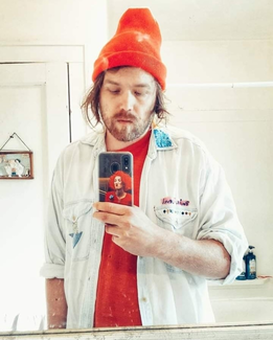
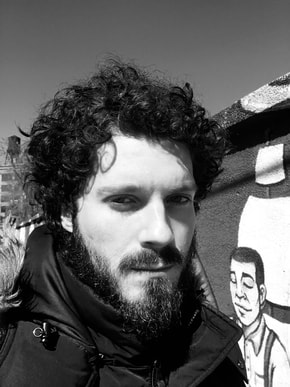
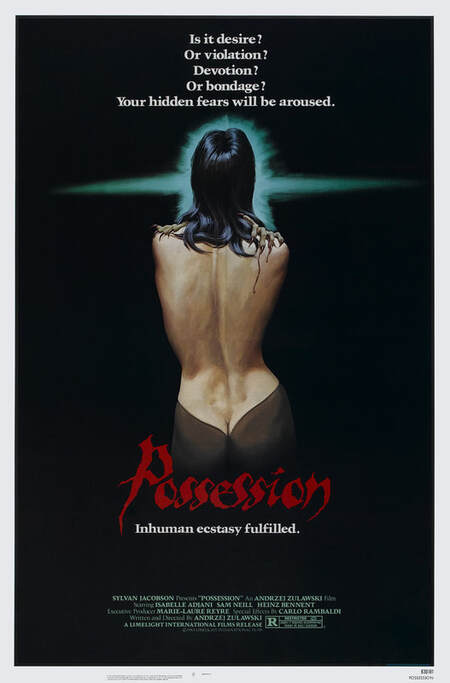
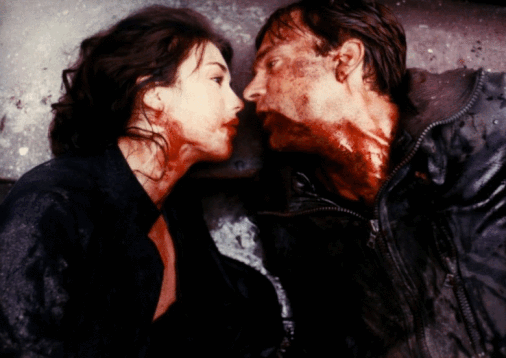
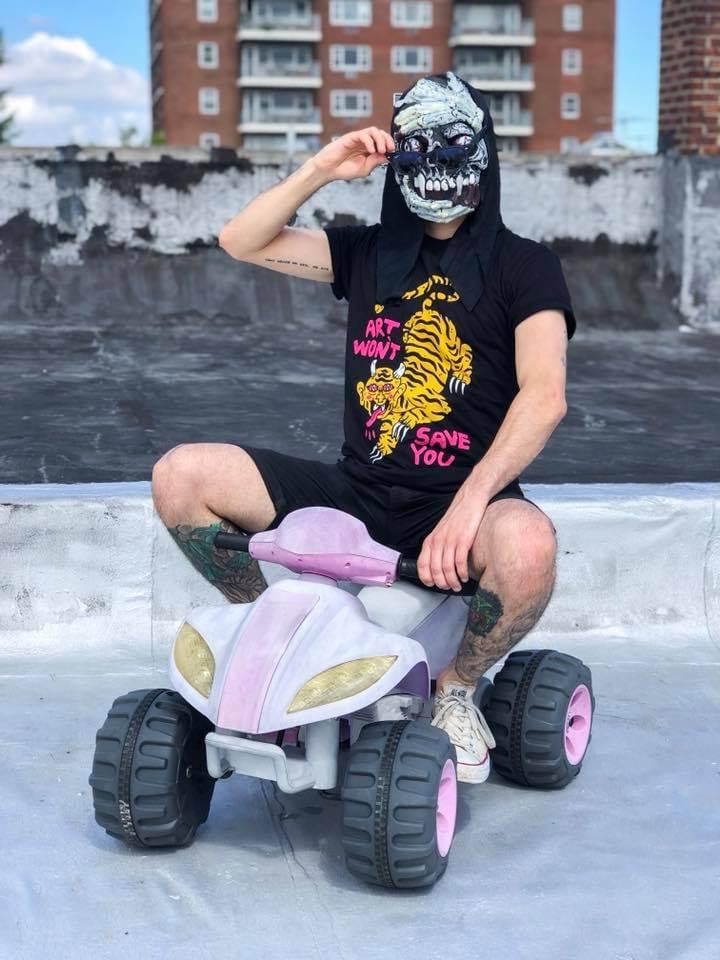

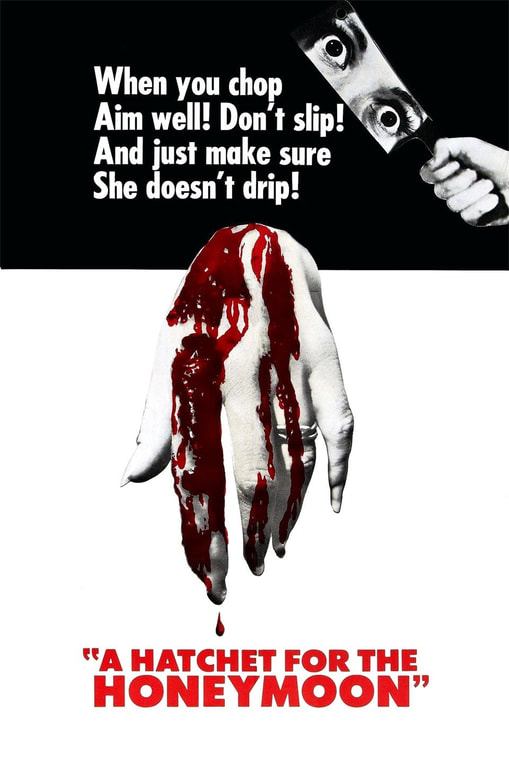

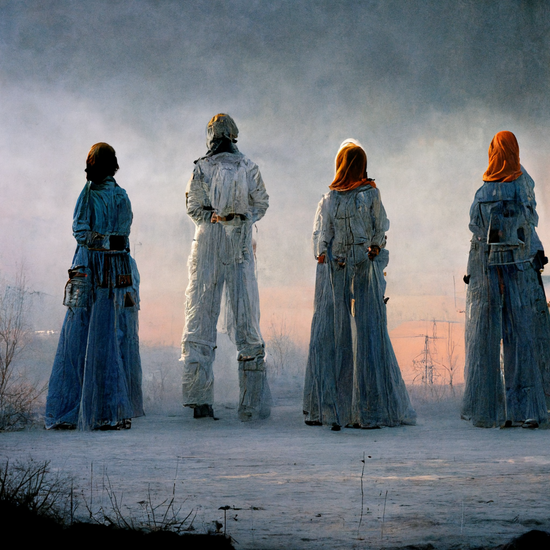
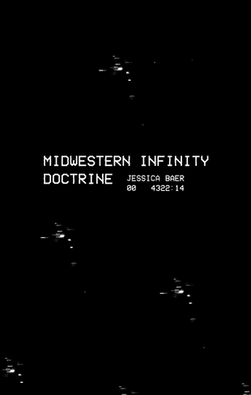
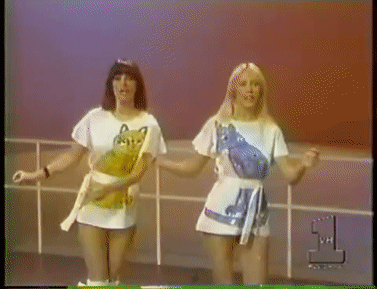
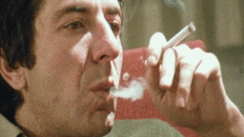
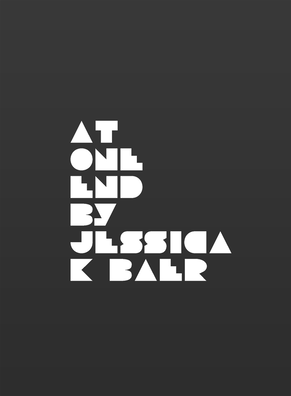
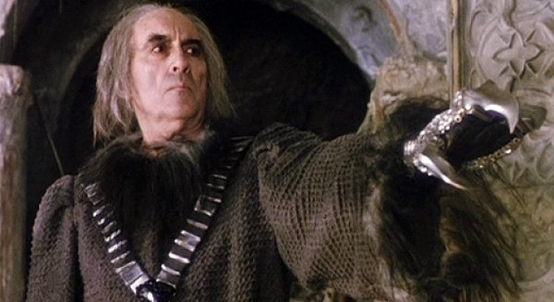
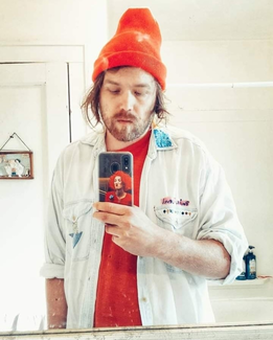
 RSS Feed
RSS Feed